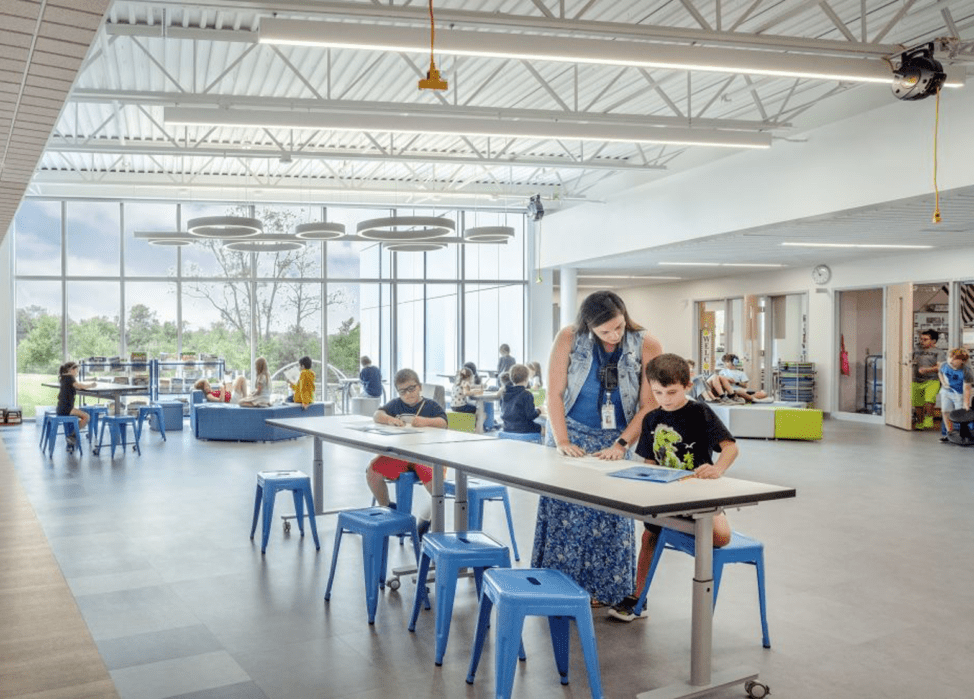
Designing your day like a museum experience means curating it with intention, creating a sense of space and flow, and making it purposeful. Just as museums carefully select exhibits and arrange them for a meaningful visitor experience, you can design your daily schedule to be engaging, memorable, and aligned with your goals.
Curated:
- Select Activities:Choose activities that are meaningful to you and align with your interests and goals.
- Group Similar Tasks:Cluster related tasks together to create a sense of flow and efficiency, like working on multiple projects in one dedicated block of time.
- Create a Schedule:Use a calendar or to-do list to plan out your day with specific times and activities.
Spacious:
- Plan for Buffer Time:Include breaks and time for relaxation to avoid feeling rushed or overwhelmed.
- Create Mental Space:Dedicate time for reflection, journaling, or meditation to process your day and maintain a sense of calm.
- Design Flexible Spaces:If possible, create spaces in your home or workspace that are versatile and can be adapted to different needs.
Intentional:
- Set Intentions:Start your day by setting clear intentions for what you want to achieve and the feeling you want to experience.
- Make Mindful Choices:Pay attention to your thoughts and feelings throughout the day and make choices that support your well-being.
- Reflect on the Day:At the end of the day, take some time to reflect on your experiences and achievements, noting what went well and what you can adjust for tomorrow.
Examples:
- Morning:Start with a mindfulness practice, followed by a planned activity like reading, writing, or exercise.
- Afternoon:Allocate time for work, errands, or social interactions, incorporating breaks and relaxation.
- Evening:Dedicate time for hobbies, socializing, or relaxing before bed, with a plan to unwind and prepare for the next day.
By designing your day with intention, you can create a more fulfilling and meaningful experience, just like a well-curated museum visit.
Transform your daily routine into a thoughtfully curated journey—where each moment is intentional, your environment spacious, and your actions aligned with purpose, much like a museum experience.
Introduction: Crafting a Museum-Inspired Daily Life
Imagine walking through a museum: each exhibit thoughtfully placed, lighting designed to highlight details, and space curated to guide your experience. Now, envision applying these principles to your daily routine. By designing your days with the intentionality of a museum, you can create a life that feels curated, spacious, and purposeful.
This approach involves more than just time management; it’s about creating an environment and a rhythm that fosters focus, creativity, and well-being. Just as museums use design to enhance visitor experience, you can use similar principles to enhance your daily life.
The Museum Analogy: Why It Works
Curated Experiences
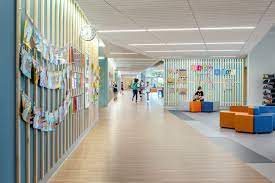
Museums don’t display everything they have; they curate exhibits to tell a story or evoke a particular emotion. Similarly, curating your daily activities ensures that your time is spent on what truly matters, eliminating the clutter of unnecessary tasks.
Spaciousness
The layout of a museum allows for movement and contemplation. By designing your day with spaciousness, you allow yourself the freedom to think, rest, and engage deeply with tasks.
Intentionality
Every element in a museum serves a purpose. By being intentional with your time, space, and energy, you can create a daily routine that aligns with your values and goals.
Curating Your Daily Schedule
Prioritize What Matters
Just as a museum selects exhibits that align with its mission, prioritize activities that align with your personal or professional goals. This might mean focusing on deep work in the morning and reserving afternoons for meetings or creative brainstorming.
Designate Themes for Days or Blocks
Museums often have themed exhibits. Similarly, you can theme your days or time blocks to focus on specific areas—such as “Marketing Mondays” or “Creative Afternoons”—to create structure and purpose.
Limit Overload
Museums avoid overcrowding exhibits to enhance visitor experience. Similarly, limit the number of tasks in a day to prevent burnout and maintain focus.
Designing a Spacious Environment
Declutter Your Physical Space
A cluttered environment can hinder creativity and focus.Museums often use minimalist design to highlight exhibits. Apply this by keeping your workspace clean and organized.
Create Zones for Different Activities
Just as museums have different rooms for various exhibits, designate areas in your home or office for specific activities—like a reading nook, a creative space, or a relaxation corner.
Incorporate Natural Elements
Museums often use natural light and plants to enhance ambiance. Bring nature into your environment to improve mood and productivity.
Intentional Living: Aligning Actions with Values
Set Clear Intentions
Before starting your day, set clear intentions. This could be as simple as stating your goals or visualizing your desired outcomes.
Reflect Regularly
Just as museums evaluate exhibits, regularly reflect on your daily routine. Assess what’s working, what isn’t, and make adjustments as needed.
Practice Mindfulness
Being present in the moment enhances the quality of your experiences. Practice mindfulness through meditation, deep breathing, or simply paying attention to your surroundings.
Drawing Inspiration from Museum Design Principles
Flow and Navigation
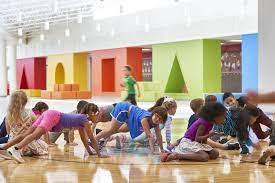
Museums design pathways to guide visitors through exhibits. Similarly, design your day to flow smoothly from one activity to the next, with clear transitions.
Lighting and Ambiance
Museums use lighting to create mood and highlight features. Use lighting in your environment to set the tone—bright for energy, soft for relaxation.
Interactive Elements
Museums often include interactive exhibits to engage visitors. Incorporate interactive elements into your routine, such as journaling, brainstorming sessions, or physical activity.
Overcoming Challenges: Avoiding Museum Fatigue
Recognize Signs of Overload
Just as visitors can experience museum fatigue, you can experience burnout. Recognize signs like irritability, lack of focus, or physical fatigue, and take steps to rest and recharge.
Schedule Downtime
Museums often have quiet areas for reflection. Similarly, schedule regular breaks and downtime to prevent burnout and maintain productivity.
Stay Flexible
While structure is important, flexibility allows you to adapt to unexpected events or changes in energy levels.
Real-Life Applications: Case Studies
Case Study 1: Themed Workdays
A marketing professional implements themed workdays—such as “Strategy Mondays” and “Content Creation Wednesdays”—to focus on specific tasks and reduce decision fatigue.
Case Study 2: Decluttered Workspace
An artist transforms a cluttered studio into a minimalist space with designated zones for different activities, leading to increased creativity and focus.
Case Study 3: Intentional Mornings
A writer starts each day with a morning ritual that includes journaling and goal-setting, leading to improved productivity and a sense of purpose.
Tools and Resources
Digital Tools
Use digital calendars and task management apps to organize your schedule and set reminders.
Physical Tools
Incorporate planners, journals, or vision boards to keep track of goals and intentions.
Community Resources
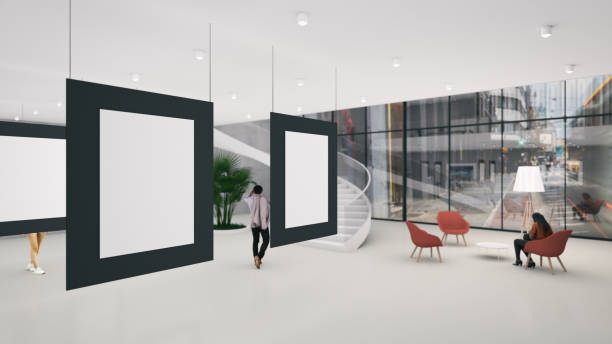
Join online communities or workshops that focus on intentional living and productivity.
different tasks could improve your focus and overall mood. A clear space can lead to a clearer mind.
Case Study 3: Intentional Mornings
A writer wanted to infuse more intention into her day and found that mornings were the key. She began each day with a 20-minute ritual where she would meditate, reflect on her goals, and journal her thoughts. This ritual helped her frame the day ahead with purpose, and her productivity skyrocketed. By creating this “morning exhibit” where her thoughts, goals, and actions were intentionally curated, she was able to approach her workday with clarity and creativity, much like a museum-goer engages with an exhibit piece by piece.
Takeaway: Begin your day with a ritual or intention-setting practice. Whether it’s meditation, journaling, or visualization, the small act of setting a clear tone can profoundly affect the rest of your day.
Tools and Resources to Curate Your Day
Digital Tools
Leveraging the right digital tools can help you structure your days in a way that mimics the precision and intentionality found in museums. Apps like Google Calendar, Trello, or Todoist allow you to organize your time, create themed days, and even break down tasks into manageable blocks. These tools also let you track your progress, adjust your schedule, and stay accountable. Setting reminders for breaks and reflecting time ensures your day doesn’t get overcrowded with tasks.
Tip: Look for apps or digital systems that allow you to visually organize your schedule. Tools like Notion, where you can set up dashboards for different tasks or projects, might mimic the experience of walking through various themed sections in a museum.
Physical Tools
Sometimes, a physical planner or a vision board can be an incredibly powerful tool to help you design your day. You can curate your day physically through the act of writing or drawing your intentions for the day. Many people find that writing things down helps them stay focused and intentional about how they spend their time. A vision board, full of images and quotes that align with your goals, acts like an exhibit in your personal “museum,” guiding you toward what you want to create or experience in life.
Tip: Invest in a high-quality planner with dedicated space for reflection or goal-setting. Alternatively, create a physical vision board or a set of inspiration cards to keep your intentions front and center.
Community Resources
Being part of a community that shares similar goals can enhance your experience of curating your days. Consider joining online groups, forums, or workshops that focus on productivity, mindfulness, or intentional living. Sharing your journey and hearing how others structure their days can offer new insights and accountability. Platforms like Reddit, Facebook groups, and even apps like Clubhouse or Meetup can connect you with like-minded individuals who are also on the path to designing their days more intentionally.
Tip: Seek out virtual meetups, workshops, or online communities focused on curating better daily habits. A support network can offer encouragement, ideas, and feedback to further enhance your experience.
The Benefits of Designing Your Days Like a Museum
While this concept of designing your days with purpose may initially sound like a lofty ideal, the real-world benefits are tangible.
Increased Focus and Productivity
By curating your days in a way that mirrors the thoughtful design of a museum, you will likely find that your focus improves. Just as a museum layout directs your attention, your structured day will guide your mental and physical energy toward high-priority tasks. You’ll also reduce the need to multitask, as everything has a designated time and space.
Better Work-Life Balance
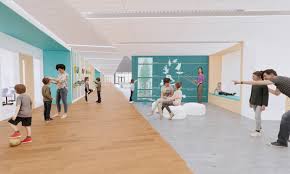
When you design your days intentionally, you allocate time not only for work but for rest and recovery. This ensures that you don’t fall into the trap of overworking. You can reserve space in your day for relaxation or hobbies, which is just as important as meeting deadlines. Just like a museum leaves room for visitors to absorb what they’ve seen, you need to leave room to absorb life and take care of yourself.
Personal Growth and Creativity
Just as a museum can spark new ideas and reflections, structuring your days with intention invites personal growth and creativity. The time you give yourself to reflect, pause, and engage in creative activities can spark new insights and innovations. You might find that your personal projects take on new life when you give them the same level of care and attention as a museum exhibit.
Overcoming the Pitfalls of Structured Living
Even with the best intentions, it can be easy to fall into the trap of over-structuring or feeling too rigid in your approach. Here’s how to overcome that:
Embrace Flexibility Within Structure
While the museum analogy encourages intentionality and curating, it’s important to allow for flexibility. Life happens. An unexpected phone call, an urgent email, or a sudden burst of creativity can derail your plans. Instead of rigidly sticking to a schedule, allow yourself some breathing room. Just as museums periodically change their exhibits, your plans and intentions should evolve with your changing circumstances and needs.
Celebrate Small Wins
Museums often have smaller exhibits or displays that highlight an artist’s journey or growth. Similarly, celebrate the small achievements in your day. Whether it’s finishing a task or taking a meaningful break, acknowledge these moments of progress. This sense of achievement fuels motivation and reinforces your commitment to intentional living.
Conclusion
Designing your days like a museum experience is an innovative way to transform your routine into something more intentional, creative, and purposeful. Just like a museum is carefully curated to engage and inspire visitors, your days can be structured to bring out the best in you, providing the space to focus on what truly matters. Whether it’s creating themed days for specific tasks, organizing your environment to spark productivity, or being mindful of how you engage with time and energy, applying museum-inspired principles to your daily life can lead to improved well-being and satisfaction.
This approach is not about rigidity but about intentionality. It’s about creating a sense of flow and purpose, allowing room for reflection and creativity while maintaining balance. As you start curating your daily experience, you’ll find that your days become more meaningful, and your sense of accomplishment grows.
Remember, just as a museum adapts and evolves its exhibits to stay relevant, your days should also be flexible to accommodate changes in energy, interests, and needs. Over time, this practice can help you avoid burnout, reduce distractions, and focus on what you find most fulfilling.
Curating your days like a museum is about treating your life as a masterpiece—one that’s designed with intention, space for reflection, and the freedom to grow and evolve. So take a moment today to step back, view your life through the lens of a curator, and begin designing your days with the same care and purpose that a museum designer puts into every exhibit.
Q&A
Q: What does it mean to curate your day like a museum?
A: Curating your day means intentionally organizing your time, tasks, and environment in a way that aligns with your values and goals. It’s about designing your day for focus, creativity, and meaningful experiences.
Q: How can themed days improve productivity?
A: Themed days help you focus on specific tasks or areas of your life, reducing decision fatigue and allowing for deeper engagement. For example, having “Creative Wednesdays” lets you devote your energy to creative tasks without distractions.
Q: How does spaciousness contribute to a well-designed day?
A: Spaciousness allows you to have breaks, reflect, and avoid burnout. Just like a museum layout has enough room to navigate between exhibits, a spacious day provides the mental and physical space for rejuvenation and clarity.
Q: Can this approach be applied to both work and personal life?
A: Yes, curating your days can be applied to both. By having a clear structure for both work and personal activities, you ensure that each aspect of your life receives the attention it deserves, leading to better balance and satisfaction.
Q: How do I avoid feeling overwhelmed when curating my day?
A: Start small by introducing one or two curating principles at a time, like scheduling themed days or creating a clutter-free environment. Gradually increase the intentionality in your day, but allow for flexibility when needed.
Q: How can I use digital tools to design my day intentionally?
A: Digital tools like calendars, task managers, and reminder apps can help you stay organized and prioritize tasks. Using tools like Trello or Notion to break your day into manageable blocks can mimic the organization found in a well-curated museum.
Q: What role does mindfulness play in curating your day?
A: Mindfulness allows you to stay present and fully engaged in each task. It enhances the intentionality of your actions and helps you appreciate the small moments, just like a museum visitor might linger on a piece of art.
Q: How do I make my workspace more museum-like?
A: To make your workspace more museum-like, create dedicated zones for different activities, keep the space clutter-free, and incorporate elements of nature like plants or natural light to enhance the ambiance and improve focus.
Q: What can I do if my day doesn’t go according to plan?
A: Flexibility is key. Just like a museum might adjust its exhibits, you can adapt your schedule when things don’t go as planned. Acknowledge what you can change and give yourself permission to recalibrate.
Q: Can I apply the museum experience concept to my social life?
A: Absolutely! You can curate your social life by being intentional about the relationships and activities you engage in. Just as a museum chooses exhibits that resonate with its visitors, you can curate your social calendar to enhance well-being and align with your values.